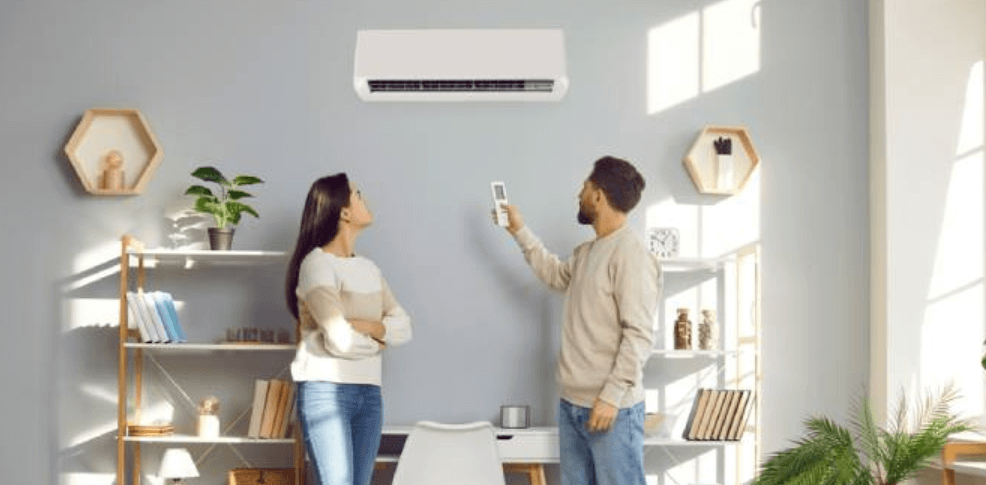Why is the HVAC System Constantly Humming?
Why an HVAC system constantly hums often comes down to a faulty blower motor, vibrating ductwork, or unbalanced fan blades. Routine maintenance and inspections can catch these issues early before they escalate. By understanding the causes and considering energy-efficient HVAC upgrades from Beltway Air Conditioning & Heating, homeowners can save energy, extend the system’s lifespan, and maintain indoor comfort.
Why an HVAC System Hums
An HVAC emits a constant humming sound that is a warning. A little sound is normal, but when the sound is loud, it may be an indicator of issues that need professional intervention.
1. Electrical Faults
The buzzing noises can be a result of loose connections inside the circuit breaker or electrical panel. Humming can also be caused by a failing capacitor or transformer, as these elements control the delivery of power.
The short circuits or electrical arc could produce buzzing sounds and be unsafe. Even an inappropriate voltage can induce strain in the system and a hum.
See also: Smart Health Monitoring Devices: Revolutionizing Personal Healthcare
2. Mechanical Stress
Damaged or unbalanced fan blades may vibrate and make a rhythmic hum. This issue reduces productivity.
Damaged or improperly aligned motor housing is likely to create mechanical noise and may affect performance.
Humming can be caused by internal compressor damage or the accumulation of pressure. Since compressors lie at the core of cooling, it is important to ensure that this is done within a short period of time.
Loose screws or parts rattle and sound like a hum. These parts are tight with regular maintenance.
3. Airflow Issues
Clogged or dusty air filters prevent airflow and overwork the system, making it hum. It is caused by dusty filters and is frequently avoided by cleaning.
Leaks or blockages in ductwork kill efficiency and create vibration. Inspections aid in finding these issues.
Closed or obstructed vents create segments of inconsistent airflow and humming.
Debris or pests stuck in the system could be causing the problem, so it needs to be checked out.
4. Refrigerant Lines
Refrigerant leaks are a frequent culprit, which can cause freezing and buzzing as the ice rubs against stuff.
Low on refrigerant – A system that’s low on refrigerant has added strain, which can cause noise. Getting the levels right is important.
Kinks or physical damage in refrigerant lines interferes with flow, increasing vibrations.
Condensation or freezing on lines indicates imminent system failure and must be addressed right away.
5. System Age
Older systems hum because they’re old.
Or, worn-out parts in ancient systems might be flailing, giving rise to a relentless humming.
With technological advances in modern HVAC units, older units are less efficient and louder.
Replacement becomes necessary when repairs no longer resolve issues.
Decode The Hum
Humming sounds in the HVAC systems and, in particular, a loud humming sound are quite common; however, what matters is the details. Listening to the volume, frequency, and persistence can help determine the air conditioner’s troubles.
Loudness
The loudness of a hum gives the initial indication of how serious it can be. An effective HVAC system will not make audible noise, and therefore any abrupt rise in noise is a possible indication of a problem. Loose objects – Bolts, panels, fan blades, etc – tend to produce more humming noise as they wear out.
A continuous and loud humming can also be indicative of electrical problems, either a failing capacitor or a defective relay switch. Monitoring the changes in the noise levels with time assists technicians in identifying whether the system is gradually wearing off or experiencing a malfunction. It is easier to differentiate between the regular operation of the unit and a mechanical failure through comparison of unusual sounds to the ordinary working hum of the unit.
Pitch
The tone of the hum honks reduces the number of possible reasons. Buzzing may also be used to denote an electrical fault, such as broken wiring, faulty motors, or unbalanced voltage. Humming with a low pitch, in its turn, may indicate the restrictions in airflow due to the clogged filters or problems with the compressor.
Sustained pitch is a typical sign of the existence of one problem, whereas intermittent or wavering tones could mean that there is more than one component that is going wrong. As an example, when a motor is hard to start, it can make a beat-like hum. Pitch analysis enables the technicians to know whether the problem is electrical or mechanical, or a combination of both.
Consistency
The hum can also be intermittent or continuous, which also goes a long way to give a good diagnosis about it. The hum is only present on particular cycles and can be an indication of a faulty blower motor or compressor. Noise levels that adjust due to variation in fan speeds are usually a pointer to airflow or mechanical pressure issues.
HVAC sounds can be influenced by seasonal factors as well. During colder seasons, such as in wintertime, affected systems can creak or groan as heating seasons start. These patterns can assist homeowners and technicians in dealing with problems before deterioration.
First Steps for Homeowners
When an HVAC unit starts making a loud hum, homeowners may perform several precautionary measures and call a technician:
- Check vents: Keep them open, clear, and free of dirt. Avoidable noises may be associated with the presence of uneven airflow or blocked vents.
- Change filters: Soiled or plugged-up filters are a common cause of humming. Filter replacement must occur once every 1-3 months with high-quality and unit-specific filters.
- Check the breaker panel: Disable the HVAC system and examine tripped breakers or indications of overheating. The breaker must correspond to the power needs in the system in order to avoid noise and damage.
These simple checks may resolve minor issues. However, internal components should always be left to professionals for safety reasons.
Dealing with a Constant HVAC Hum
A steady hum may indicate loose components to electrical issues- or even to regular system performance. Risking more repairs and damage, it is better ignored. Simple service or maintenance, including filters, airflow verification, can easily minimize noise and extend the efficiency of the system.
In case the hum does not disappear or only becomes worse, calling a professional HVAC technician is possible to treat the problem in the right way and safely. Proficient professionals will be able to find out the source of the problem and do the required repairs.
Proactivity is a sure way of ensuring comfort, efficiency, and that saves time, money, and stress. Early solution to the hum provides the homeowners with confidence and returns silence to the house.






